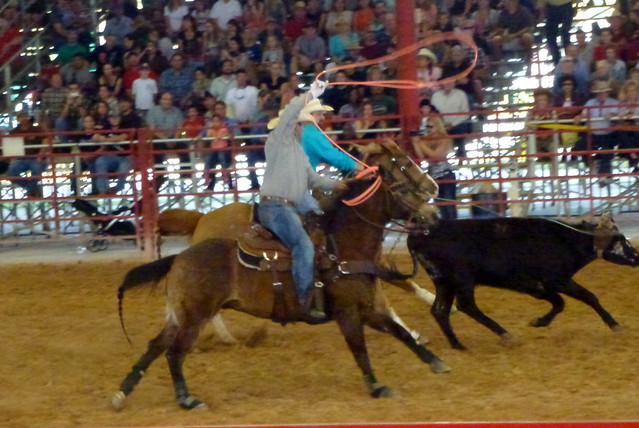 The beauty of David McCullough’s The Wright Brothers emanates from McCullough's ability to flesh out these two men, showing them as more than cardboard figures in ancient photo stills or early 1900 stereotypes in antique movies getting their airplane off the ground at Kitty Hawk and launching us into an entirely new age. In McCullough’s book, these are real men, challenging themselves to do something no man has ever done before. We know what happens, but traveling on their journey is quite a trip.
The beauty of David McCullough’s The Wright Brothers emanates from McCullough's ability to flesh out these two men, showing them as more than cardboard figures in ancient photo stills or early 1900 stereotypes in antique movies getting their airplane off the ground at Kitty Hawk and launching us into an entirely new age. In McCullough’s book, these are real men, challenging themselves to do something no man has ever done before. We know what happens, but traveling on their journey is quite a trip.
As usual, McCullough’s meticulous research gives us much more than an historical moment; it gives us a feeling for the period in history when men in several countries of the world knew they were on the brink of being able to finally and confidently move into another realm—the air. The race began on the ground, but the finish line was in the air. Wilbur and Orville Wright’s story is timeless. And it’s fascinating reading.
McCullough doesn’t begin with their airplane. He begins by allowing his reader to observe Wilbur and Orville, their relationship with one another and with other members of their family, their personal characteristics which seem to complement each other, their family history of the early loss of their mother, the steadfast values of their traveling Bishop father, and their extraordinary dedication to making something worthwhile of their lives. That last quality was virtually in their DNA and led them to work tirelessly to fulfill a life-long dream to fly. Theirs becomes a story not only of early 20th-century discovery but also a lesson for every dreamer today.
No one needs to be reminded of man’s quest to fly. Through the ages, stories abound: in Greek mythology’s Icarus, in ancient drawings, in Da Vinci’s flying machine drawings, and in numerous documented failed attempts. Always interested in the mechanical nature of how machines work, the Wright brothers were explorers and inventors—printing and publishing their own newspaper, getting in on the bicycle craze and then becoming bicycle builders who develop and patent their own popular brand of bicycles. They continued that business to earn a living as they also worked on their airplane.
Absorbed with watching the way birds use their wings—not by flapping so much as by riding the currents of air—they left the prevalent aeronautical culture and worked on developing a wing shape that enabled them to do the same thing. But before they even tried to build, they studied everyone who had ever made attempts at building a flying machine. They had immense help from the Smithsonian Institution, for instance. They also intuitively knew to keep their cards close to their chests as others around the world were attempting to fly as well.
By the time the brothers brought their machine to the primitive beaches of Kitty Hawk, they understood they were close to realizing their dream. They returned seasonally over several years before they actually performed that first flight. It’s difficult to imagine that even after their theories worked, the brothers still had to learn to fly—and they had no teachers. It was a matter of getting into the air and through trial and error without killing themselves that they learned to ride the currents and soar like the birds.
Amazingly, the exciting prospect of flight did not, at first, have Americans anxiously on the edges of their seats. The French and Germans were most enthusiastic, and, indeed, the initial financing and fame the Wright brothers gained came from Europe rather than from America. In pursuing the important business aspect, Wilber Wright spent a great deal of time in Europe, eventually bringing over his brother and, ultimately, his sister and father.
As fame and competition impacted their work, Wilbur remained the businessman in the flying enterprise, and Orville became the flier, recovering from a tragic flying accident where he was seriously injured and his passenger was killed. In fact, lawsuits concerning patents as well as the business aspect of their enterprise occupied so much of Wilbur’s time that he was forced to give up flying in order to attend to business. Orville continued to fly and break records.
Reading about these pioneers is fascinating. Though two of the most important men of the 20th century, they never became arrogant or changed by their celebrity. The money and fame that accompanied their work were not the goals, and those who knew them often mentioned their basic humility.
Orville lived to a ripe old age, but Wilbur died in his mid-40s. Their far-reaching successes came early.
I was fascinated by the book. I thoroughly enjoyed reading it and learning about these two very important men and their accomplishments as well as their bumpy road to success. They exemplify the American dream, working tirelessly to achieve their goals and finally reaching them through their hard, dangerous, and sometimes exhausting efforts. I just flew cross-country from Seattle, and I tried to imagine how they would react to the hustle and bustle of SEATAC or Newark airports. I wonder what they would say if they could see their invention today as a mode of travel for even the ordinary person. I wonder what they would have said to the men and women who took the idea of flying and sent us to the moon and beyond!
Other David McCullough books I’ve read, enjoyed, and highly recommend are Truman, John Adams, 1776, The Path Between the Seas (about the building of the Panama Canal), The Great Bridge (about the building of the Brooklyn Bridge), The Johnstown Flood, and Mornings on Horseback (about Theodore Roosevelt). I haven’t had a moment of boredom. I’ve enjoyed every one. This is history that reads as a novel, revealing the people and time as well as discussing the event. It doesn’t get much better than this.















































